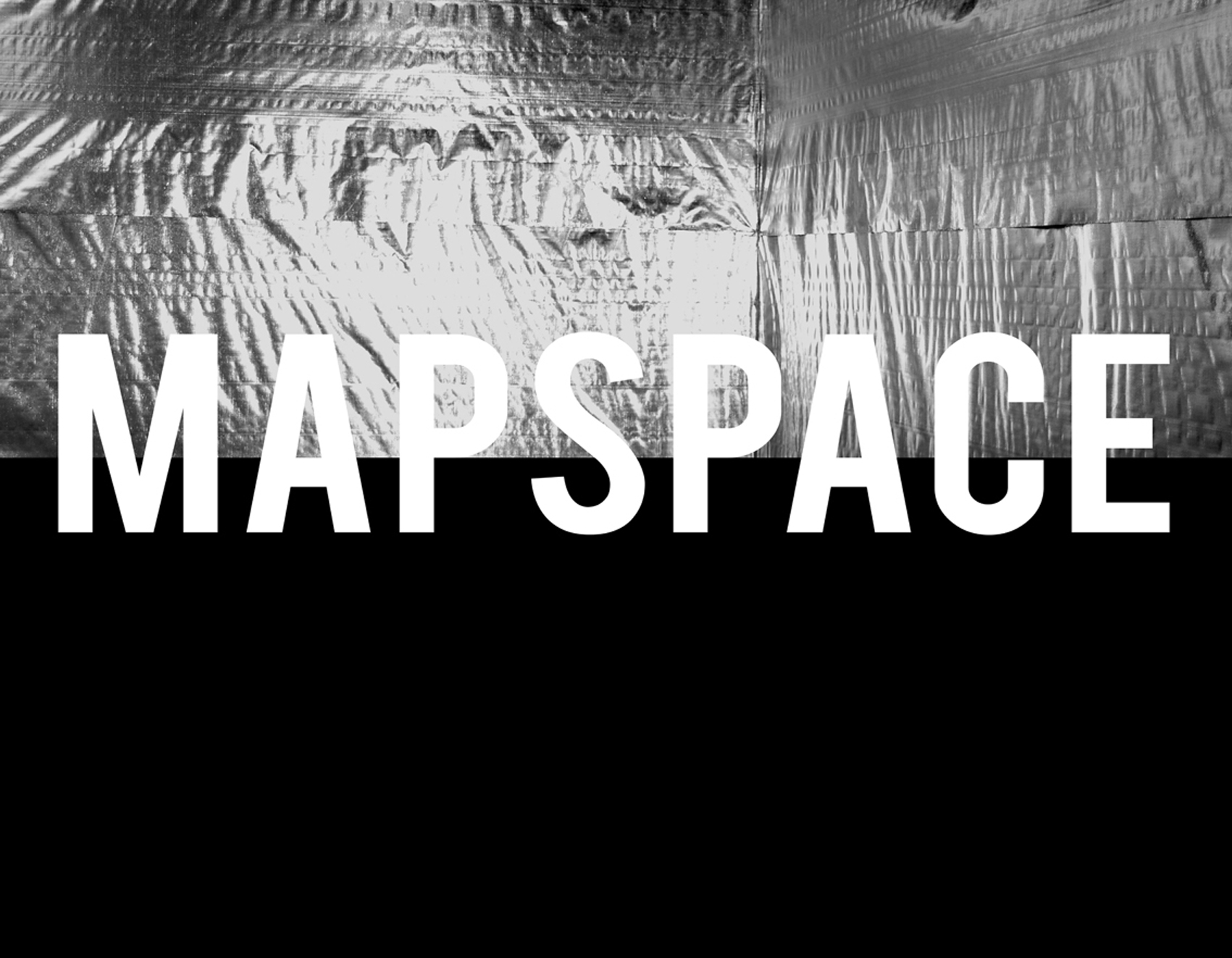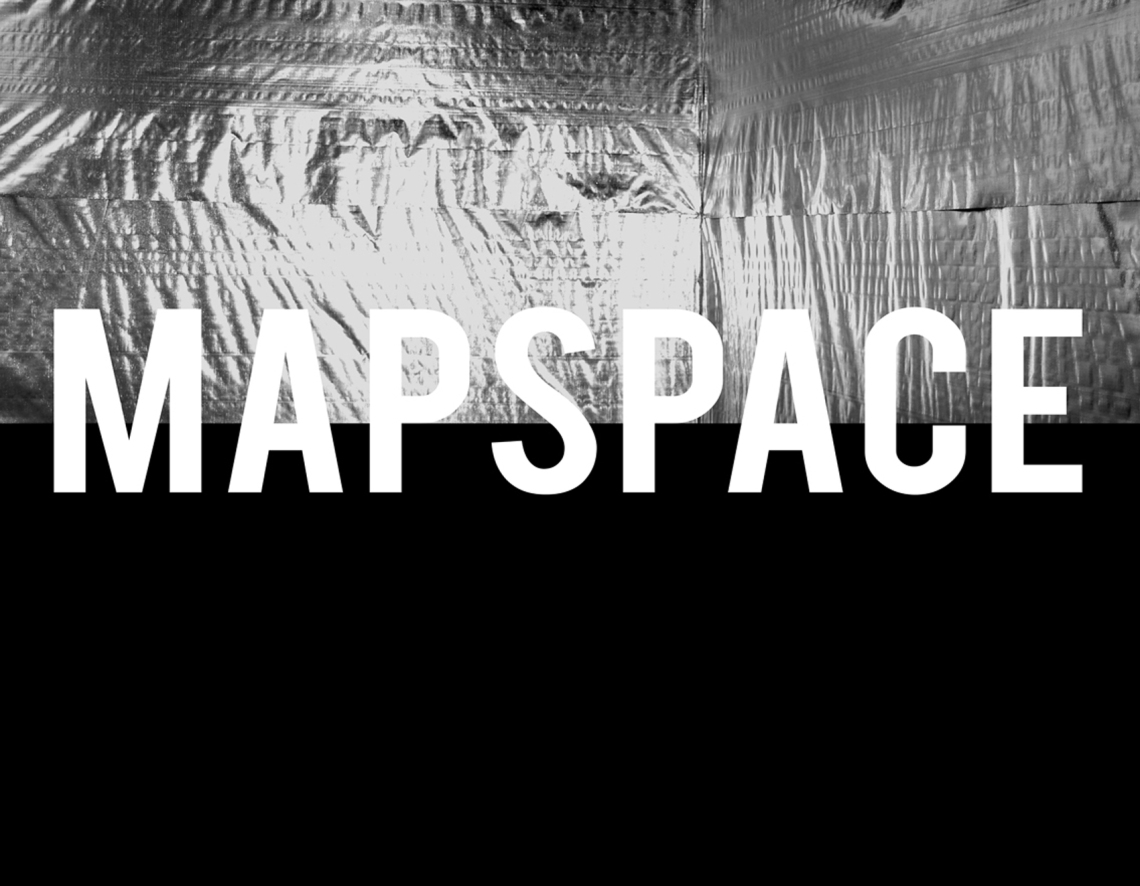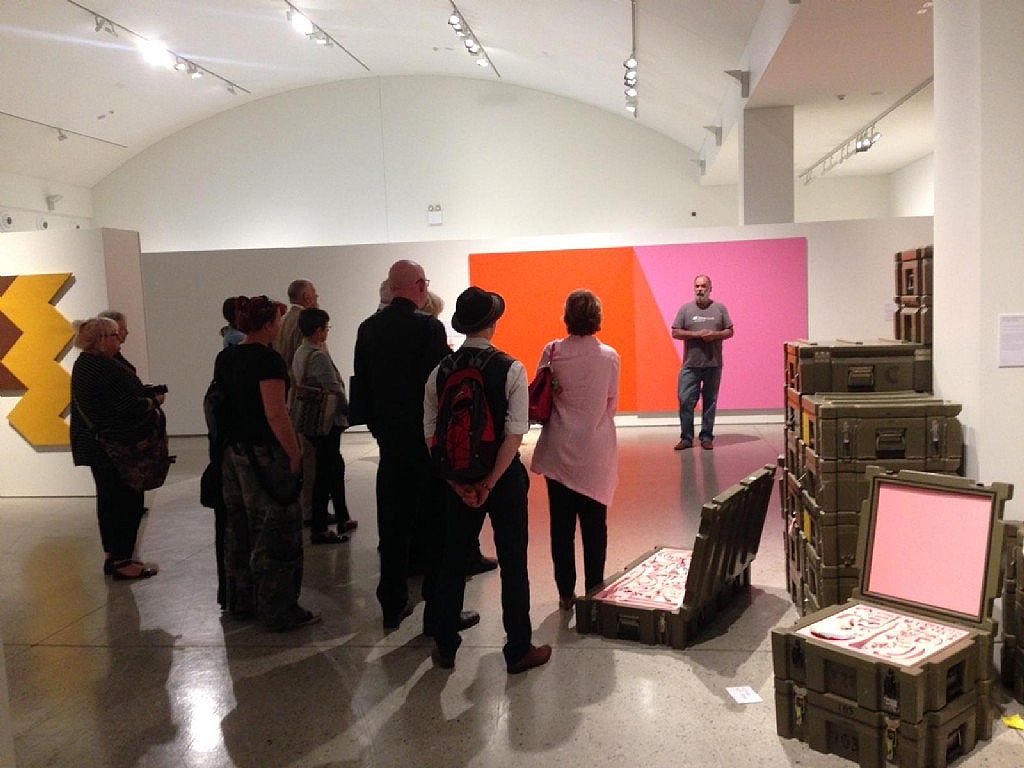Photos from the recent exhibition at the Blue Mountains Cultural Centre in Katoomba.
A fantastic exhibition with record attendances.
Map Video Reel
The Map Video reel features moving image artworks by artists that have been connected with MAP’s Artist Run Space; West. In many cases the video being shown is the actual work that was exhibited at West.
The moving image works shown are interesting because in addition to giving an overview of a particular artists work, the large variety of moving image works also provides a good overview of this type of art practice as a whole. Currently we refer to this type of art practice as Time Based Art.
Time based Art is different from the more traditional practices of painting and sculpture because Time Based Art is more obviously constantly changing. Time Based Art is different before, during and after the viewer looks at it. In order to fully appreciate the work the audience has to dedicate more constant time to the work in order to engage with it.
Static works such as most painting and sculpture do not change and can be viewed and reviewed at different times. Famous works are often reproduced as static images, and although seeing a painting in real life is very different to a reproduction it is possible to engage with a static visual image in a way that is not possible with a constantly changing Time Based Artwork.
Studies have shown that people typically only spend very short periods of time looking at artwork. With a static image that short period of time can be dedicated to one constant visual idea, which is something that does not happen with Time Based Art.
The Time Based Art in this exhibition engages with the moving image in a variety of interesting ways. Video Art not only addresses time as subject matter, it requires the viewer’s time. As such, video art has its own established sets of conventions. The audience must become familiar with these in order to appreciate the experience of Time Based Art.
Most of us understand the complex conventions of television and cinema. Often we apply this understanding to Time Based Art. We know for example that television programs and movies have a beginning and an end, that this will be indicated with titles at the start and credits at the end. We know that to understand a T.V. program or a movie we must watch everything from start to finish. We even accept and understand that this program might be interrupted by advertising breaks or banners!
Time Based Art has its own rules and codes which although similar to T.V. and Cinema in some ways are also very different. Sometimes audiences view Time Based Art with an expectation that it will follow the rules and conventions of Television or Cinema. When it doesn’t they can become confused and even reject the work. However if audiences have more of an understanding of how Time Based Work sometimes functions, or at least if they understand that it is not a television program or a movie in the conventional sense, they may engage with the work more successfully.
This video reel is significant because it has a wide variety of different time based works and it allows the audience to understand some of the many different types of work there are.
Time Based Art can be presented to the audience in many different ways. It might be on a T.V. monitor just like a regular T.V. (single channel) or in a cinema-like dark room on a big screen (single channel). It might be presented on more than one screen at once (multi –channel). It might involve the technology it’s presented with in a sculptural way. It might be interactive.
In addition to the use of hardware, Time Based Art also has its own visual language. Time Based Art might slow down or speed up images, or it may be looped in an endless repetition, or use a conventional narrative. Time Based Art can be original work or appropriated images. It may be stylized or distorted or be a conventional documentary.
Time Based Art may borrow the conventions of T.V. and Cinema but it is not T.V. or cinema.
The Time Based Artworks in this exhibition are in a single channel loop. This means that there is one main screen and the works are shown one after the other, and at the end, the cycle will repeat itself. Because of the large numbers of work and their duration the loop is quite long (over an hour). This means it’s unlikely that the viewer will sit through the entire loop. More likely the viewer may choose to sit a while and view a number of works in their entirety or may simply wander around the exhibition taking in the general atmosphere of the works in unrelated pieces.
Some of the works are designed to be viewed in one sitting and others lend themselves more to dedicated viewing in sections.
Some Time Based Work documents an event or performance such as the video by Jill Scott- Taped which documents an important performance from 1975. John A Douglas has documented a recent MAP performance in his work Incursion – Damp and Mark Titmarsh’s work Painting Town (Red), records an action taking place.
Perhaps the work might be documenting a sculptural work that was site specific such as the works by Jon Rose- Aeolian Hills Hoist , Bryden Williams – Ripping Fencing From the Ground, and Jackie Drinkall – Harlequin UFO,.
Sarah Breen Lovett’s Cubist Flicker, is a very short work that uses still images. The Black and White stills are presented in very quick succession. No commentary or music accompanies the static images of architectural spaces. The work is a kind of documentary but it has been presented in an unconventional way.
Talulah Vane’s work The Tiger Lost seems to present a more conventional storytelling, however the audio and visual imagery are out of sync which forces the viewer to consider a deeper meaning. Abi Tariq’s work Into/Out of balance looks like documentation of a performance however the camera has been inverted and the image affected to create a more self contained work.
Some artists choose to adopt familiar conventions of mainstream media in order to make a comment about them or as a way to engage with a wide audience.
Zeb Olsen’s work You Made me Realise presents visual imagery that accompanies her performed original music. The artist Systaime, also uses the conventions of music video in the work Lust, a music clip for The Idiot Philosophers as does EST ET NON, in EDU K EEN THEME REMIX.
Sean O’Keeffe has used the conventions of mainstream and art-house cinema in his work Cognitive Dissonance. His work mimics not only the conventions of camera angles, aspect ratio and soundtrack, he has also reproduced the textural qualities of worn film into the work.
Gianni Wise has explored the textural qualities of video imagery and sound in Spectres+of+the+Spectrum+III with images and sounds that explore the visual by products of video production, grain, pixilation and glitching as tools for creative expression.
This appreciation of the tactile qualities of visual media is also apparent in Nick Strike’s work Burndiver. Burndriver uses celluloid film footage, which may or may not have been filmed by the artist and physically, alters it by burning out the central subject. This work functions as a kind of visual sculpture. Nikki Walkerden has also explored the tactile qualities of celluloid film in her work Rings & Divisions – On Saturn’s Edge in which she has created imagery by manipulating the film stock with paint and ink.
Joan Ross’s work The Claiming of Things, functions very much like an animated painting. Appropriated figures from colonial paintings interact with a variety of characters and objects in a landscape also appropriated from a colonial painting. Her animation makes a comment about the history of Australian Art and its relationship with colonialism.
All of these works are very different. All engage with the materials and tools of moving imagery in different ways, but all are Time Based Art.



You must be logged in to post a comment.